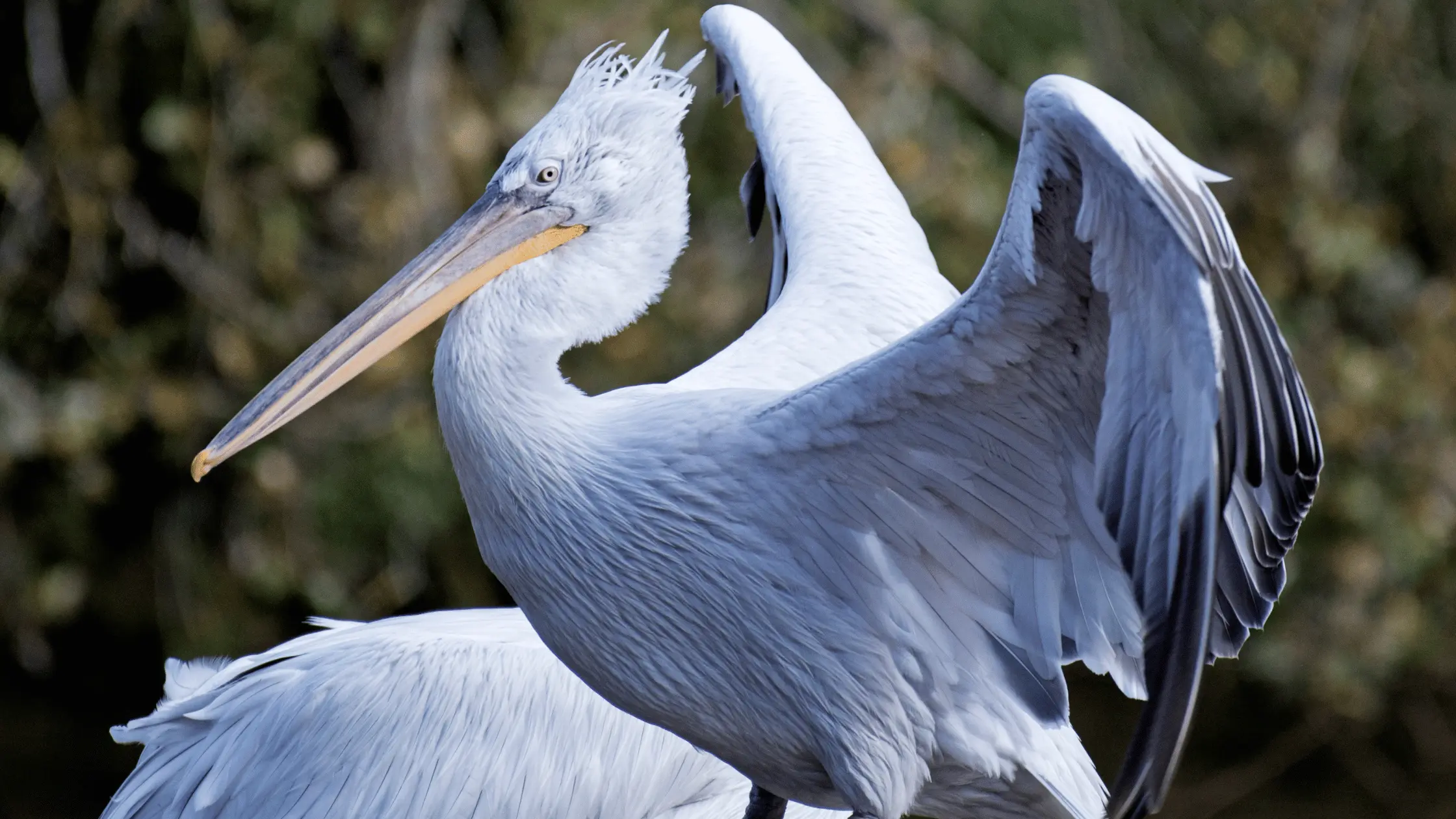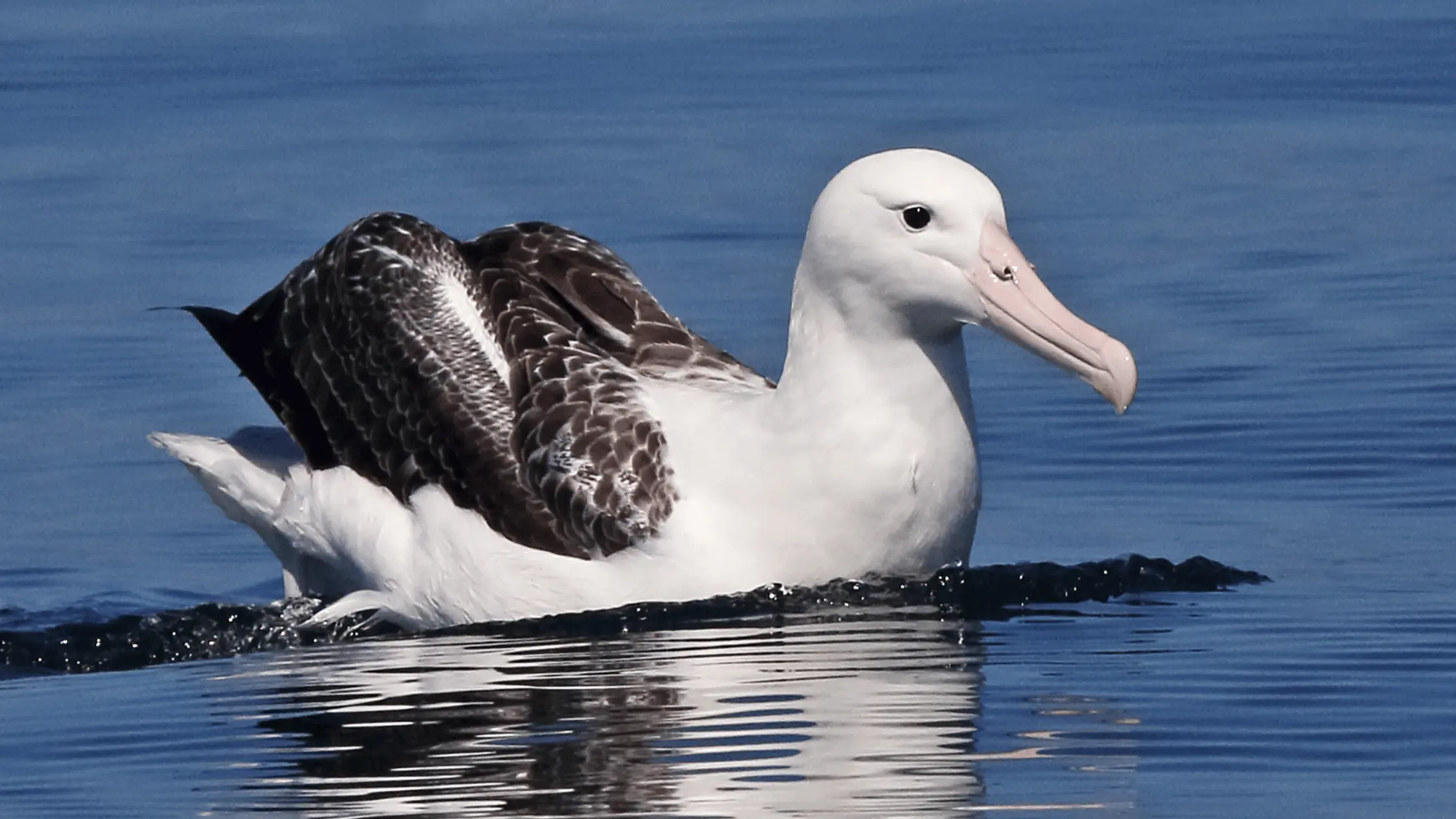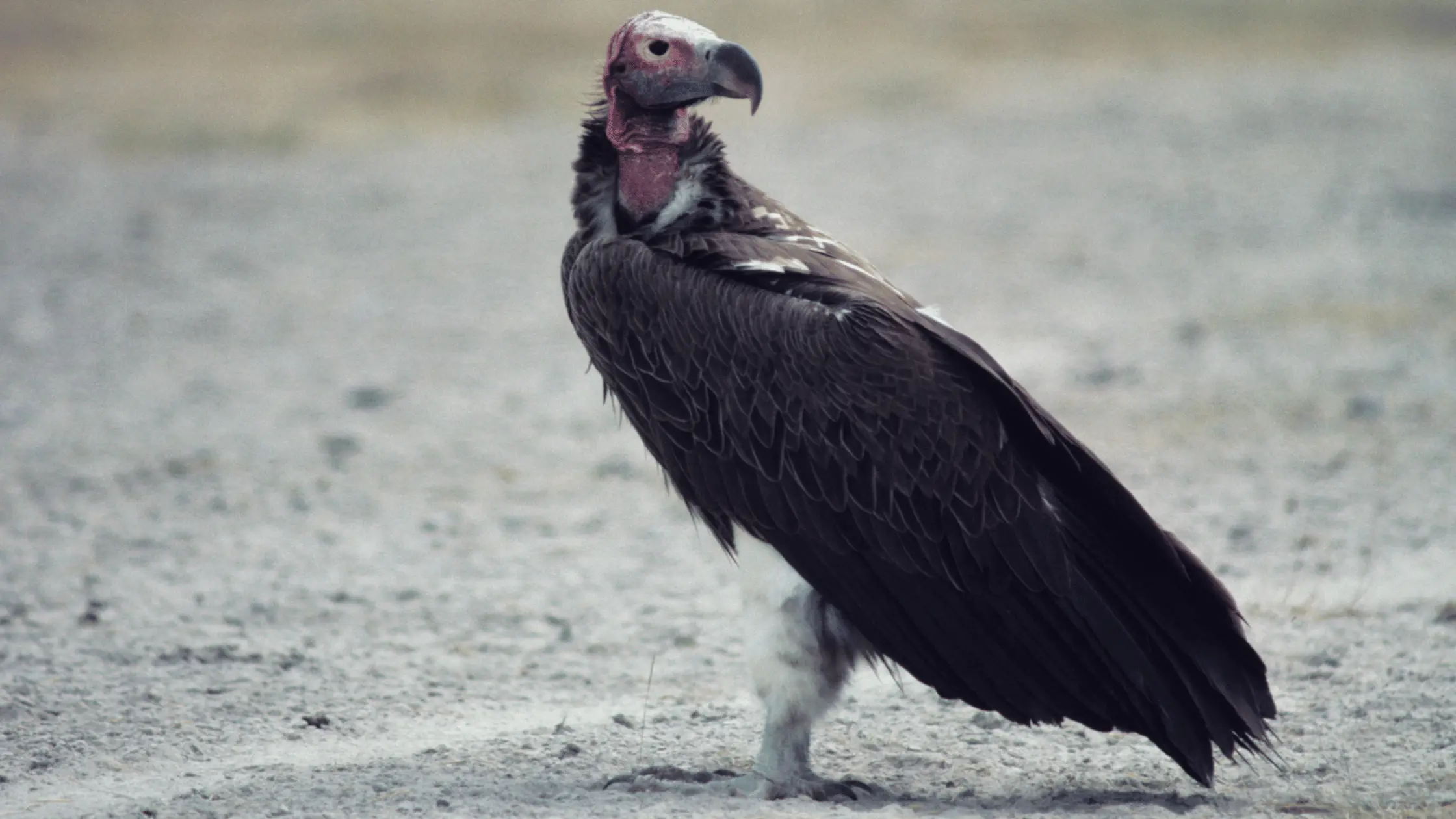In my journey as a bird watcher, I’ve come across many shapes and sizes of birds. I have seen small birds, such as the hummingbird, and large birds, like the Andean condor. Birds like the Andean condor can weigh up to 29 pounds with a wingspan of 11 feet!
The Albatross family boasts bird species with enormous wingspans in the Avian world. Other birds, such as herons, vultures, and swans, closely follow them. Here are the top 10 birds with the largest wingspan.
1. Wandering Albatross

The bird with the largest wingspan is the wandering albatross. Remember that I told you that the Albatross family boasts bird species with enormous wingspans? The verified wingspan of the wandering albatross is 12.1 feet, and it beat out the great white pelican.
You will find the wandering albatross living above the world’s southern seas, one of the world’s most giant birds. The wandering albatross has been subject to numerous research which puts its average wingspans from tip to tip at 10 feet. However, there are accounts that the albatross wing can reach up to 17 feet, but those accounts are unverified.
Did you know that the wandering albatross can fly for hours without flapping its wings once? These birds fly for a very long time and will only stop flying when they want to feed or breed. They can fly for 75,000 miles per year!
2. Great White Pelican

Coming in second is the great white pelican. The great white pelican boasts of having a wingspan of 12 feet. The great white pelican lives in shallow lakes and swamps and can be found in Asia, Europe, and Africa. The great white pelican is a massive bird and can weigh up to 33 pounds, while the females weigh about 20 pounds.
The great white pelican breeds in South Africa and occasionally in Northern Greece, Russia, and Turkey.
Apart from its massive wingspan, the great white pelican is also known to be a very social bird. When they are hunting, they will gather in circles around a school of fish and dip their beaks into the water. The massive bill of the great white pelican serves as some “fishing basin” for catching fish. The diet of these birds is mainly fish, but they will occasionally eat the chicks of other bird species.
3. Southern Royal Albatross

The southern royal albatross is another species from the albatross family with a giant wingspan. They have a wingspan of up to 12 feet which seals the southern royal albatross place as one of the biggest birds in the world.
You will find these massive birds living in South American waters. However, when it is time to lay eggs, the southern royal albatross will return to the subantarctic Campbell Island. The trip from South America to the subantarctic Campbell Island will require the southern royal albatross to circumnavigate the globe, which they can do thanks to their massive wings easily.
The male and female albatross usually take turns caring for their young.
4. Dalmatian Pelican

The fourth bird with a large wingspan is the Dalmatian pelican. The Dalmatian pelican has a wingspan of 12 feet and is native to Mongolia, but they will mostly make their home in Russia. The Dalmatian pelican likes to live near web habitats near the Mediterranean coastline. These enormous birds hold the number one spot in terms of size in the pelican family, and they can weigh up to 33 pounds.
The Dalmatian pelican loves to eat fish. They have white plumage, which always looks disheveled, and a dull yellow beak for most of the year. However, the beak of the Dalmatian pelican will turn bright orange when the mating season comes around. Unfortunately, the Dalmatian pelican is a species that is near extinction.
5. Tristan Albatross

The Tristan albatross enters the number five position with a wingspan of 11 feet. The Tristan albatross can be found in the south Atlantic Ocean as it forages over territories thanks to its enormous wingspan. The male Tristan albatross will feed west of the Island, and they can be seen in South America. While on the other hand, female Tristan albatross will feed east of the Island, where they can be seen in South Africa.
Like the Dalmatian pelican, the Tristan albatross is also critically endangered. These large birds will breed only every other year, and they form lifelong mating pairs. The female Dalmatian pelican likes to lay eggs in open heath, and her offspring don’t become sexually mature until they are ten.
6. Antipodean Albatross

The antipodean albatross is another endangered species that has a large wingspan. They are found in the South Pacific and boast a wingspan of 11 feet! The antipodean albatross may be spotted in several locations. Still, when it is time to breed, it will return to Campbell Island, New Zealand’s Auckland Islands, and the Antipodean Islands to breed. These birds can weigh a whopping 19 pounds.
One of the beautiful facts about the antipodean albatross is that it will return to the area it was born to lay its eggs. They only lay two eggs every two years. The male and female antipodean albatross incubate their eggs like doves and pigeons.
7. Andean Condor

The great Andean condor finally makes our list, coming in seventh place. As their name suggests, the Andean condor is native to the Andes mountains, and these majestic birds are the national symbols of countries like Ecuador, Bolivia, Columbia, Chile, etc.
The Andean condor is a heavy bird weighing about 29 pounds with a wingspan of 11 feet. Once the Andean condor takes flight, it will hardly flap its wings as it soars through the air. The plumage of the Andean condor is a mix of black and white.
The Andean condor shows sexual dimorphism, with the males having a large red comb on their head crest. The Andean condor isn’t a vocal bird due to the absence of a syrinx! When they are feeding, you may hear them hiss or cluck. The Andean condor is also endangered.
8. Northern Royal Albatross

The northern royal albatross has a wingspan of 10 feet. These beautiful birds, also known as the toroa, are easily recognized thanks to their dark wings. I know you are probably tired of me listing endangered species, but you must forgive me as I tell you that the northern royal albatross is also endangered. However, there is some light at the end of the tunnel, which I will share at the end of this paragraph, so read on.
The northern royal albatross can be found in South Islands, Taiaroa Head, and New Zealand Chatham Island.
The northern royal albatross weighs about 16 pounds, reaching sexual maturity at eight. They can live for as long as 40 years, and their main diet is dead or dying fishes found near water surfaces. When it is mating season, the male northern royal albatross will perform elaborate mating rituals in the air and water. Both the male and female are involved in incubating eggs.
Now, for the good news. Even though the northern royal albatross is an endangered species, its numbers are gradually increasing. This is because conservative efforts have been made to make their nesting safe and easy. Sprinkler systems are included in Taiaroa Head( their favorite nest place) to fight off the heat on sunny days.
They recommend placing practical cotton balls dipped in peppermint oil to avoid flystrike to cover the smell of albatross eggs.
9. Marabou Stork

The marabou stork can be found in wet and dry areas south of the Sahara desert. The marabou stork can weigh as much as 17 pounds. The marabou stork is often called the undertaker bird, and they look like they are wearing black pants from the rearview.
Marabou stork reaches sexual maturity when they are four years old and mate for life. Just like ravens, the marabou stork is a scavenger that will often be found near human settlements.
Marabou Storks have legs and toe bones that are hollow, and this kind of bone structure is essential for flight. Additionally, unlike other birds, they do not store food in the pouches on their throats; instead, they attract a mate using their large throat sacks.
10. Nubian Vulture

The Nubian vulture is another bird with an impressive wingspan. They are commonly called the African-eared vulture, and their wingspan can go as far as 9.2 feet.
The Nubian vulture is a giant bird in Africa, and they are excellent scavengers thanks to their ability to soar for a long time as they look for feeding opportunities. The Nubian vulture has a powerful beak that helps it tear into tendons and hides that other bird species may consider too hard.





